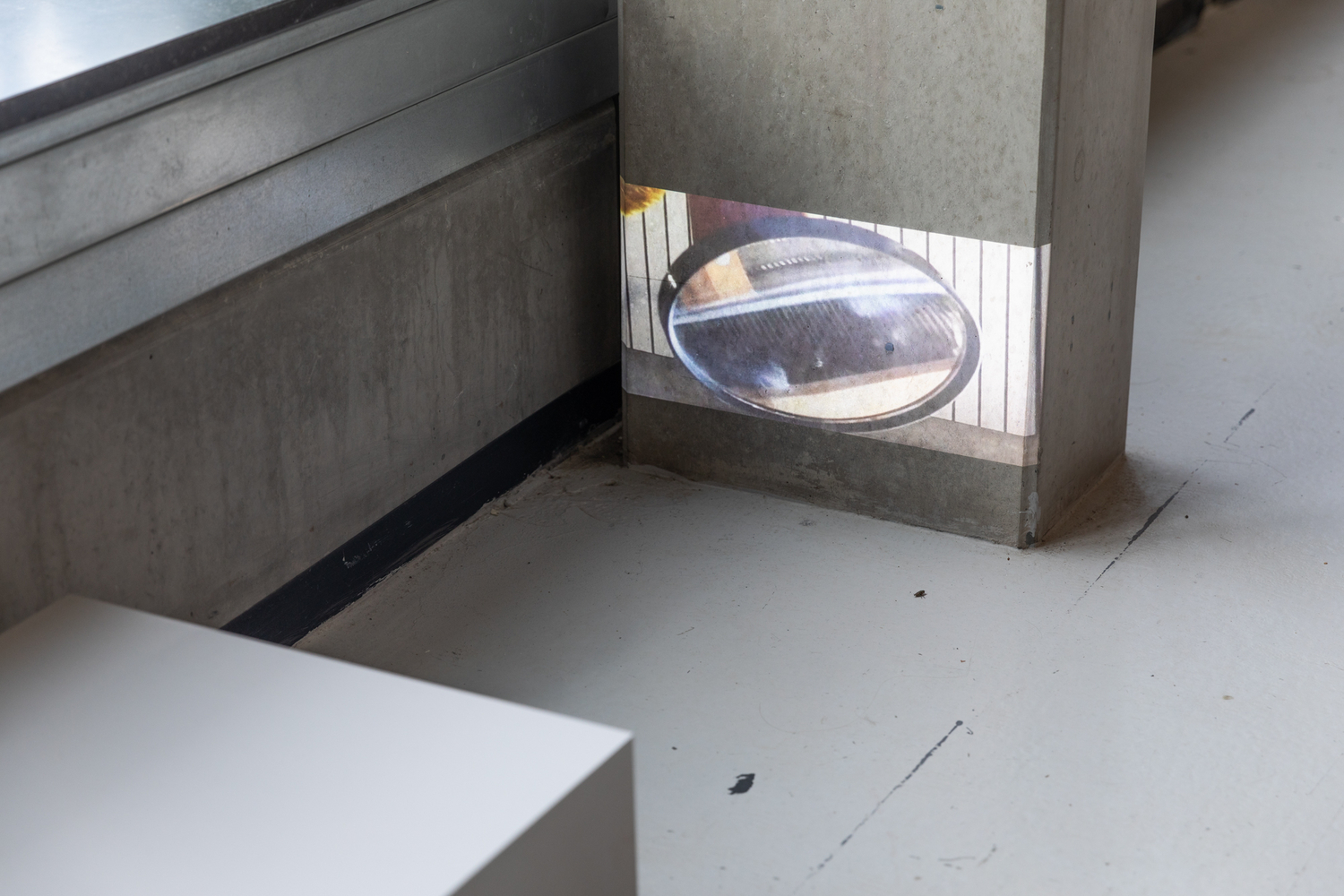
Dariya Trubina
she
@happyasasquare
Thesis: 'Reflecting, Transgressing, or Bending Back, Stretching, Warming up to Go to the Other Side
on tenter hooks
[threaded or shredded] une fois de plus, sans*
She uses the plain weave, the strongest, simplest and most ancient of weaving techniques. She occasionally intervenes in it, pulling at the threads, un-evening the pattern and adjusting the shape in a way that is both patient and slightly violent, challenging its pre-determined form.
Treating material as language and language as material, she is interested in translation, taking systems of organisation and shifting them just slightly, lightly curving their learned meaning.
Tenter hooks [from Medieval Latin tentōrium, from Latin tendere to stretch] were used in the process of making woollen or linen cloth which needed to be washed, stretched and dried under tension, to retain its shape and size. The wet cloth was stretched over a wooden frame - a tenter - using the hooks (nails), and left to dry. Over the centuries of using this method of controlled drying, the expression 'to be on tenterhooks' acquired a figurative meaning in English. It is used to describe a state of uneasiness, anxiety, pressure, or suspense. This expression is often misinterpreted as "tender hooks", creating an eggcorn — a substitution of an element as people try to make sense of a phrase that uses a term unfamiliar to them.
In double weaving one layer covers another, preventing access to a part of the process. Tension, errors, gaps can be checked by using a small mirror, placed in the opening between the upper and the lower layers of the weave. An indirect ingress: a material and temporal reflection of the process. A rear view. A translation.
dariya likes to rearrange glossaries, grids and gaps in her close readings of architecture and built environments. She indicates the performative potential of space, working with object-based compositions, voice, sound and movement. Stretching the codes of repetition.
*title of the sound composition made in collaboration with MVRGN
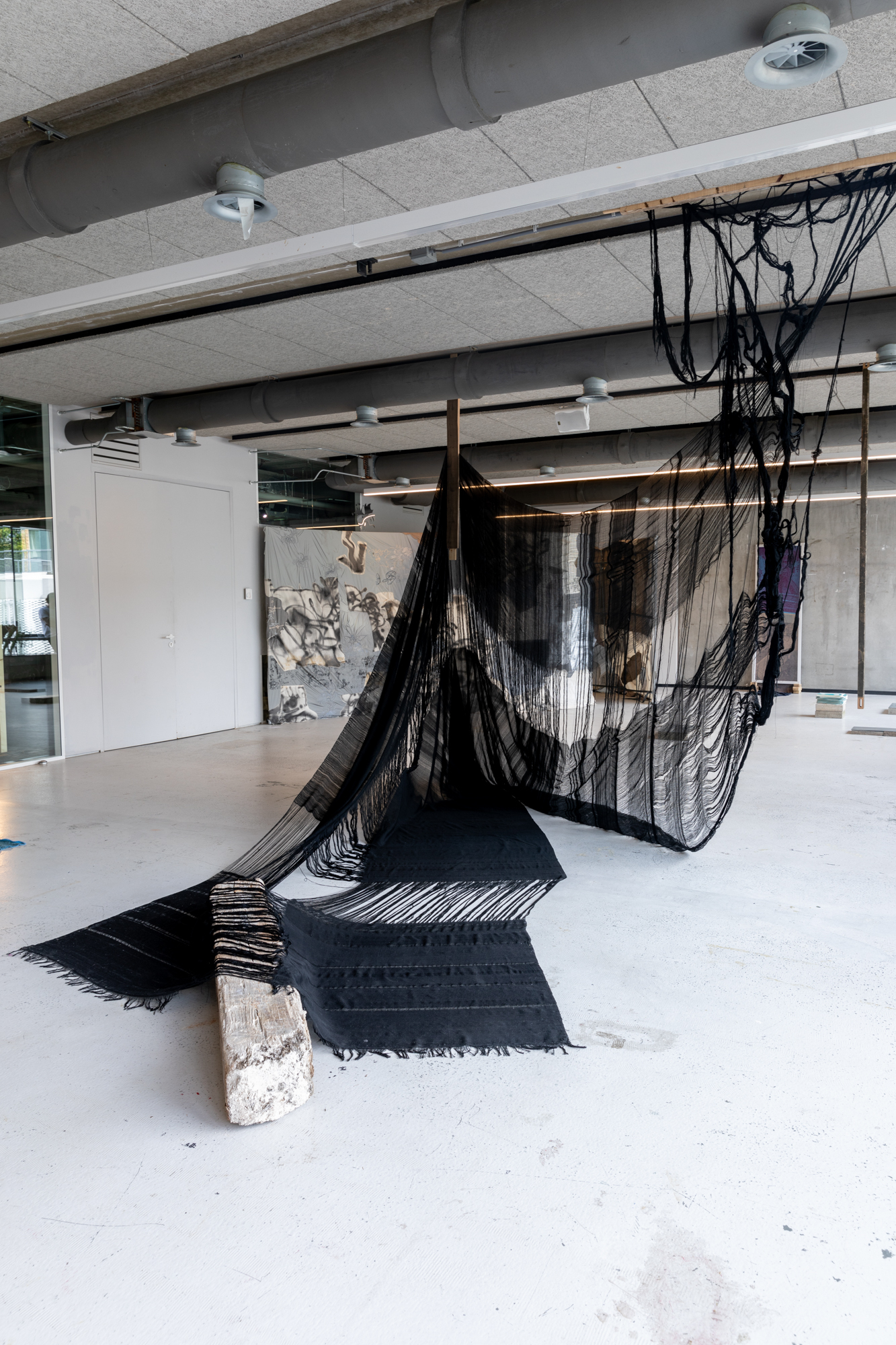
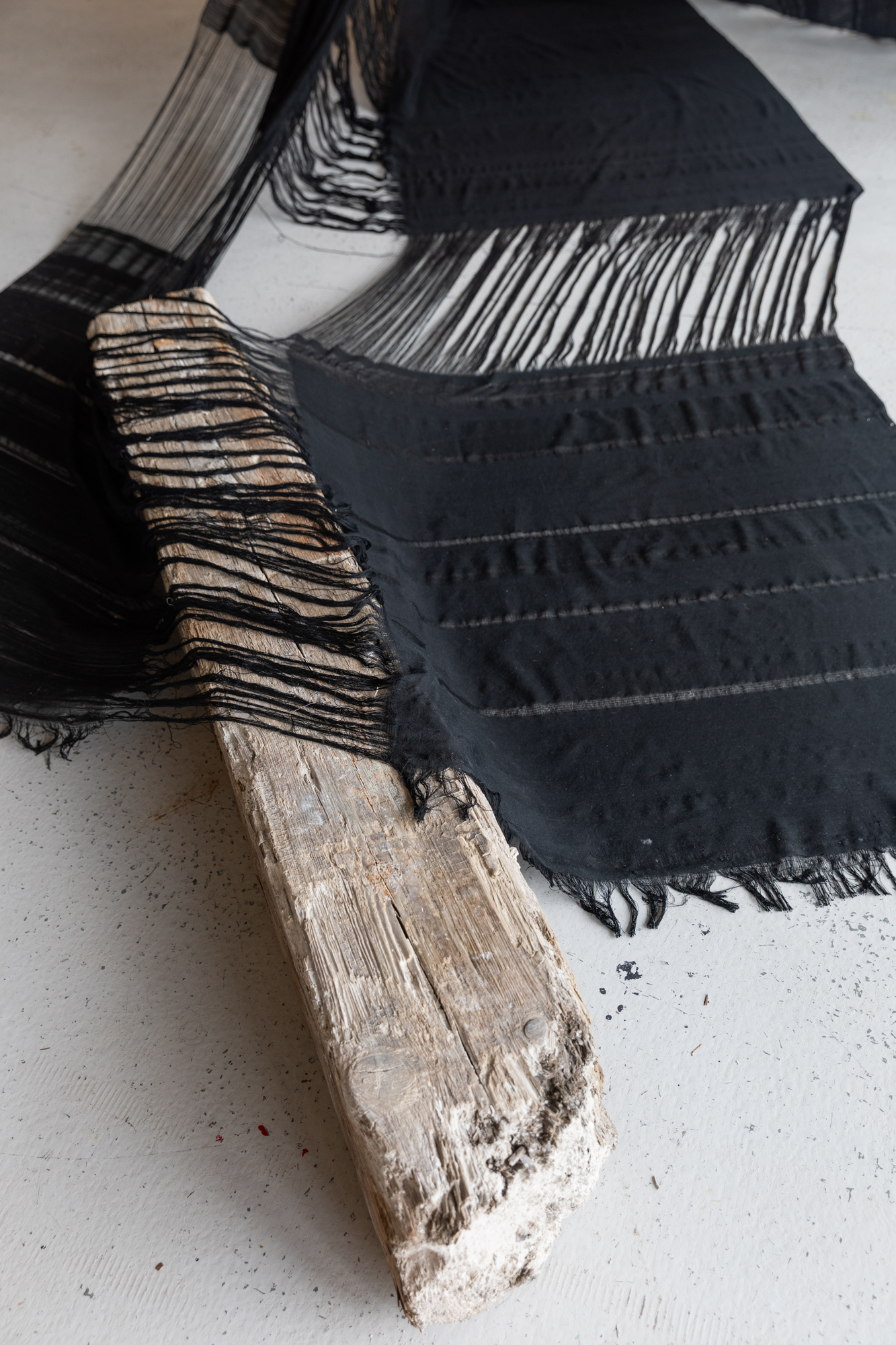
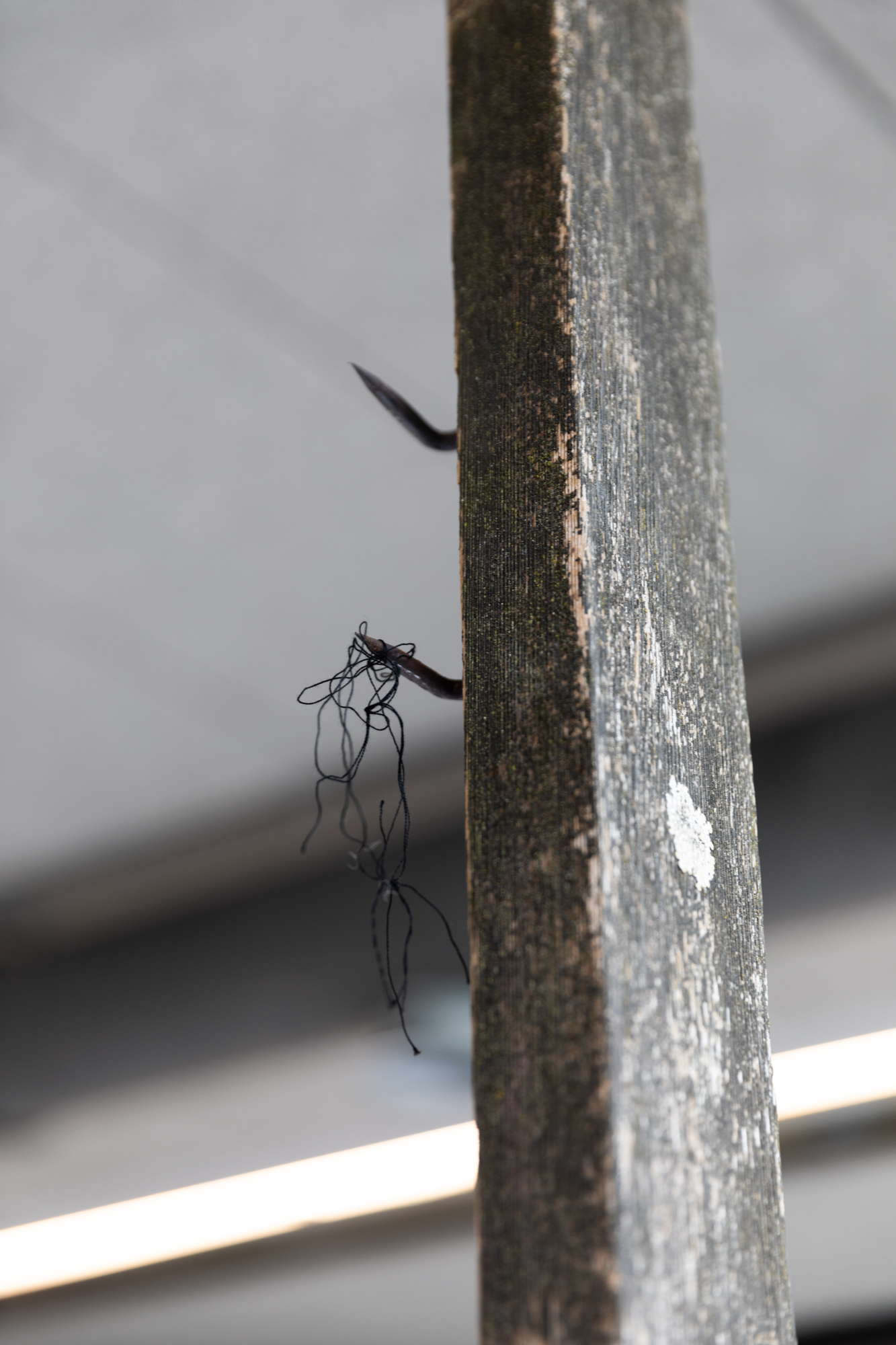
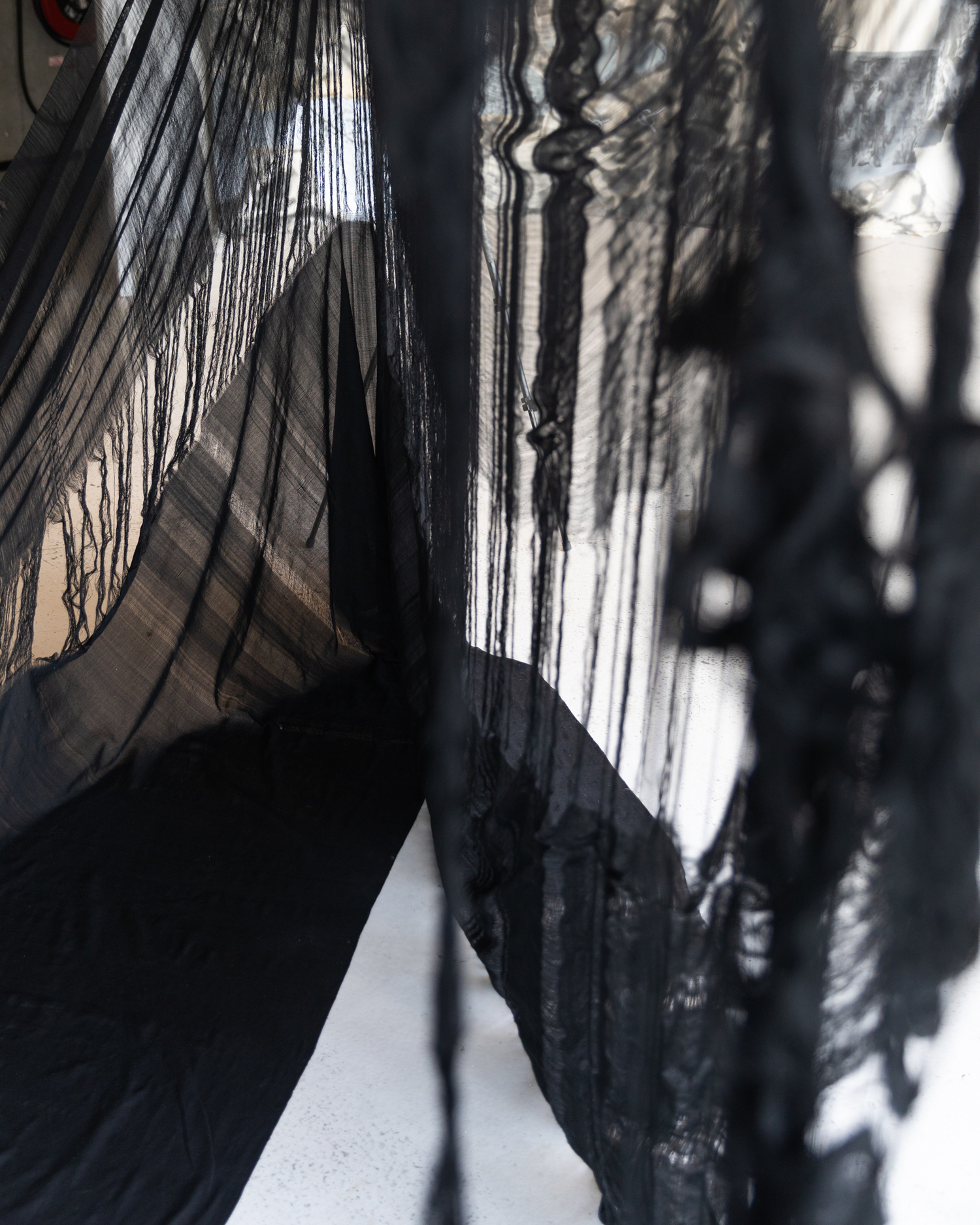
Photos by Jordi de Vetten